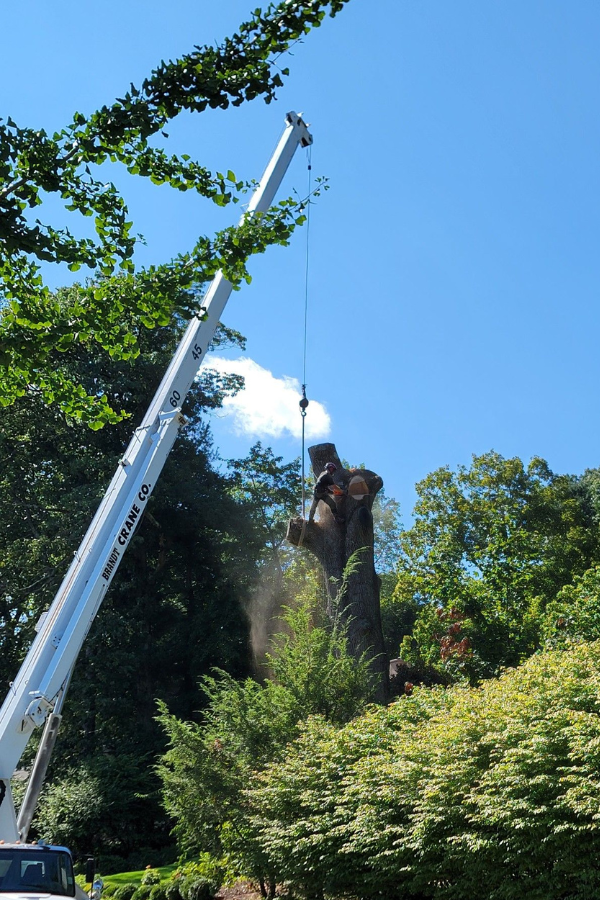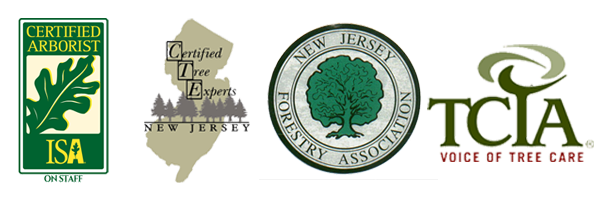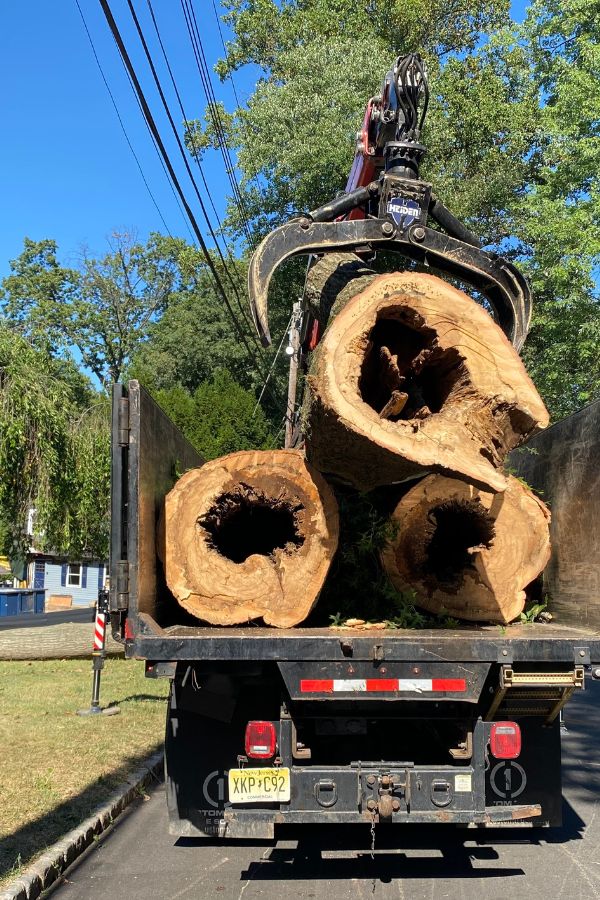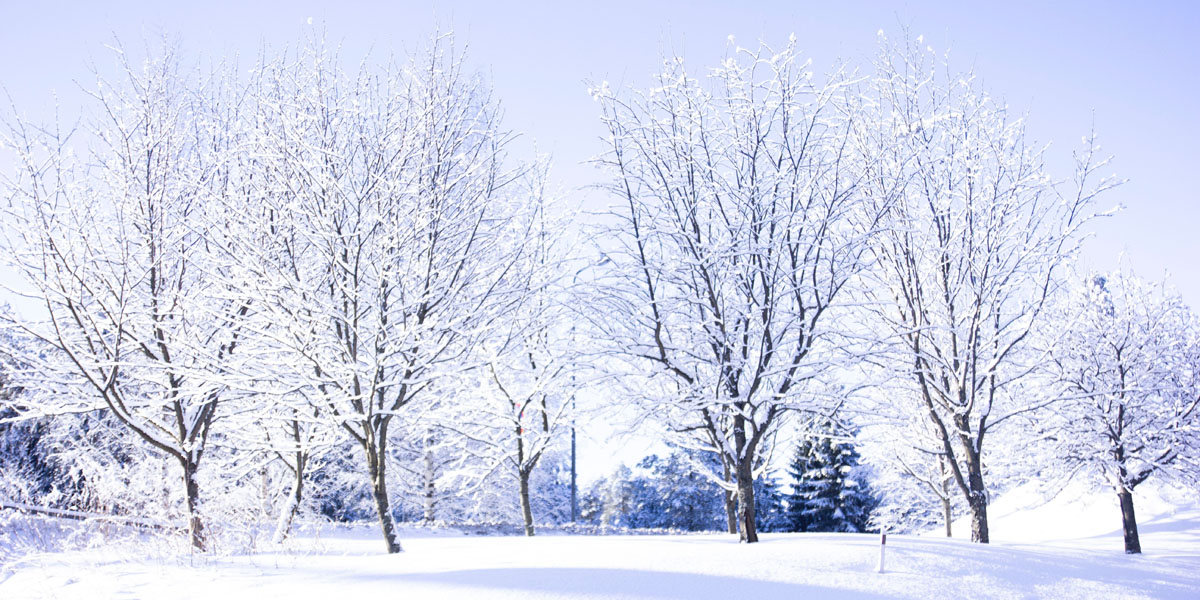If you have a tree removal emergency, call us immediately at
It's not as simple as just
"cutting down a tree"
Tree removal is dangerous work that should not be attempted by anyone without the experience, equipment and training to do it correctly and, most of all, safely.
How We Remove Trees Safely
There are several ways to safely bring down a tree. The best option depends on the condition of the tree, where it's located, what's surrounding it, weather conditions, and more. Typically, we'll use one of the methods described below.
Felling a Tree
If there's enough open ground around the tree, we may be able to cut down the tree in one piece. This is more often possible with smaller trees, especially if there are other trees nearby that we can attach ropes to that are used to control the tree as it's being felled.
Cutting Down a Tree in Pieces
With larger trees and in tighter spaces, a tree will usually be removed by cutting it apart in pieces. First, the branches are removed to allow access to the top of the tree. Then the trunk is cut into pieces, starting at the top of the tree and moving downward. Each piece of the tree is either dropped to the ground or carefully lowered with ropes, depending on what's beneath and around it.
Removing a Tree With a Crane
Very large trees, ones that are considered hazardous, and trees in very tight spaces are usually removed using a crane. We can often access the tree from the street or driveway, avoiding damage to your lawn from heavy equipment.

Contact us to have your tree(s) removed

THE TREE IS DEAD OR DYING
As the tree continues to deteriorate, it can become a significant safety hazard. The longer you wait to remove it, the more dangerous it is and the more difficult to do.
BLOCKING THE VIEW
Sometimes pruning alone isn't enough to let you see beyond the tree's branches, either to see the view or something more important, like a stop sign.
TOO CLOSE TO A BUILDING
If a tree's branches are damaging your roof or siding as they sway in the wind, or if roots are cracking your home's foundation or walkway, consider removing it.
THE TREE IS CROWDING OTHERS
Without "elbow room" to grow freely, trees take on unappealing shapes, develop bare spots in the canopy, and are more prone to diseases.
OBSTRUCTING TRAFFIC OR PASSERSBY
A tree that's blocking a walkway, drive, road, or other area you need to access, may need to be removed, especially if it creates an unsafe situation.
UNSAFE OR POOR STRUCTURE
Trees can grow into poor shapes that are inherently unsafe (such as a "Y" shape), or can be damaged by storms, pests and disease.
Did You Know?
Free Wood Chips
We offer unlimited FREE wood chips to our customers! We'll even deliver them for free within our normal service area. Deliveries take place when we're doing other work in your area - we're not able to schedule delivery for a specific date or time.
We Also Offer
Seasoned Firewood
Rather than taking tree remains to the local landfill, we process them into firewood. Give us a call if you'd like to purchase locally-sourced, well-seasoned firewood.







